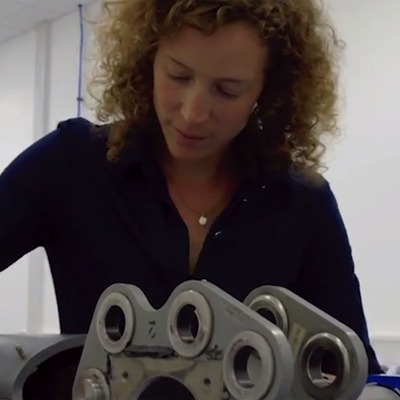As part of your apprenticeship you are required to undertake off-the-job training.
Off-the-job training must be directly relevant to the apprenticeship standard and will help lead towards the achievement of your apprenticeship, teaching new knowledge, skills and behaviours (KSBs) relevant to the standard.
The Department of Education has published a policy booklet on off-the-job training which can be found on the UK Government's website.
Off-the-job training is partly planned as the time you spend at Cranfield - in lectures, for example. If you are required to come to Cranfield at times you would not normally be working - for example, on a Saturday - you can count this towards your off-the-job activity, providing you receive time off in lieu from your employer, as off-the-job training can only be recorded during your paid working hours.
Off-the-job training is a statutory requirement of an apprenticeship and a record of this must be kept. It must be recorded by the student and there is a tool in your portfolio to facilitate this. Cranfield have also provided a spreadsheet to help you calculate the total number of off-the-job hours you require.
Off-the-job training could include:
- The teaching of theory: lectures, role playing, simulation exercises, online learning or manufacturer training;
- Practical training: shadowing, mentoring, industry visits and attendance at competitions;
- Learning support and time spent writing assessments and/or assignments.
Off-the-job training does not include:
- English and maths (up to level 2);
- Progress reviews or on-programme assessment needed for an apprenticeship standard;
- Training which takes place outside the apprentice’s paid working hours (unless you are allowed time off in lieu);
- Training to acquire KSBs that are not required in the standard.
How many off-the-job activity hours do I need to do?
The total figure for off-the-job training hours is calculated by using a figure of 30 hours, deducting statutory annual leave entitlement, over the length of the apprenticeship. A spreadsheet has been provided in PebblePad to calculate this figure.
As a general rule of thumb, this would equate to approximately one day per week if you worked 30 hours per week. However, you aren't required to undertake the off-the-job training in this format, i.e. one solid day per week. Instead, you could undertake a few hours here and there, so long as it was recorded and over the duration of the apprenticeship, the total figure covers the amount required.
How do I prove I have completed off-the-job activity?
A tool has been provided in PebblePad for the apprentice to record the hours they undertake as off-the-job activity. As off-the-job activity can be activities such as writing assignments, time spent in lectures etc, the assignments and attendance registers can be used as proof. There is the facility to upload proof of off-the-job activity into PebblePad.
What sort of work within the workplace could count as off-the-job activity?
Any work that the apprentice would not normally undertake as part of their role and which supports the achievement of the KSBs as set out in the apprenticeship standard can be counted. For example, the apprentice could be put in charge of a project which they would not normally have been involved in. This also may provide opportunities for exposure to other areas which they may not have otherwise been exposed to, in turn providing opportunities to apply the newly learned KSBs.
What are the standards and how can I find them?
Apprenticeship standards show what an apprentice will be doing and the skills required of them, by job role. Standards are developed by employer groups known as Trailblazers. The standards can be found on the Institute for Apprenticeships and Technical Education website and are also found in your PebblePad portfolio in the home page, under the 'Standards' tab.
What do I do with progress review documents?
You can record your progress reviews using your own document and upload it into your portfolio Progress Review tab, or you can use the template provided in the Progress Review tab in the portfolio. There is a guide available in your PebblePad portfolio on the home page, under the 'Resources' tab.
What will be assessed as part of the degree apprenticeship?
Each standard has a slightly different assessment plan and requirements, so look at the apprenticeship standard specific page on the Institute for Apprenticeships and Technical Education website to find your particular assessment guide. The breakdown of the competency requirements are in the annex/appendices. The assessment guide has also been provided in your own portfolio resources area.






